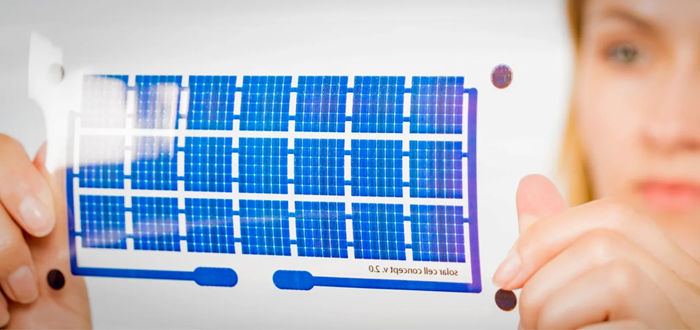Researchers from Swansea University and Åbo Akademi University made an important advancement in solar cell technology by creating a new analytical model that enhances the comprehension and effectiveness of thin-film photovoltaic (PV) systems. This study was published in the journal PRX Energy.

Image Credit: Swansea University
For almost 80 years, the Shockley diode equation has described current flow through solar cells, which power homes and charge battery banks. However, a recent study cast doubt on this conventional wisdom about a certain kind of next-generation solar cell, specifically solar cells using thin films.
The low efficiency of these flexible, inexpensive, thin-film solar cells is caused by several issues that the current analytical models cannot adequately account for.
The latest research provides insight into how these solar cells attain maximum efficiency. It demonstrates a crucial equilibrium between capturing the energy produced by light and reducing losses from recombination, the process by which electrical charges cancel each other out.
Our findings provide key insights into the mechanisms driving and limiting charge collection, and ultimately the power-conversion efficiency, in low-mobility PV devices.
Dr. Oskar Sandberg, Study Lead Author, Åbo Akademi University
New Model Captures the Missing Piece
A blind area existed in earlier analytical models for these solar cells due to "injected carriers," or charges that entered the device through the connections. These carriers have a significant effect on limiting efficiency and recombination.
The traditional models just were not capturing the whole picture, especially for these thin-film cells with low-mobility semiconductors. Our new study addresses this gap by introducing a new diode equation specifically tailored to account for these crucial injected carriers and their recombination with those photogenerated.
Ardalan Armin, Associate Professor and Principal Investigator, Swansea University
Dr. Sandberg added, “The recombination between injected charges and photogenerated ones is not a huge problem in traditional solar cells such as silicon PV which is hundreds of times thicker than next generation thin film PV such as organic solar cells.”
One of the brightest theoretical physicists of all times, Wolfgang Pauli once said ‘God made the bulk; the surface was the work of the devil’. As thin film solar cells have much bigger interfacial regions per bulk than traditional silicon; no wonder why they get affected more drastically by ‘the work of the devil’ – that is recombination of precious photogenerated charges with injected ones near the interface!
Ardalan Armin, Associate Professor and Principal Investigator, Swansea University
Impact on Future Solar Cell Development
This model provides a new framework for material property analysis, device optimization, and the creation of thinner solar cells and photodetectors with higher efficiency. It can also help train machines for device optimization, which is a big step forward for creating next-generation thin-film solar cells.
Journal Reference:
Sandberg, O. J., et al. (2024) Diode Equation for Sandwich-Type Thin-Film Photovoltaic Devices Limited by Bimolecular Recombination. PRX Energy. doi.org/10.1103/prxenergy.3.023008.